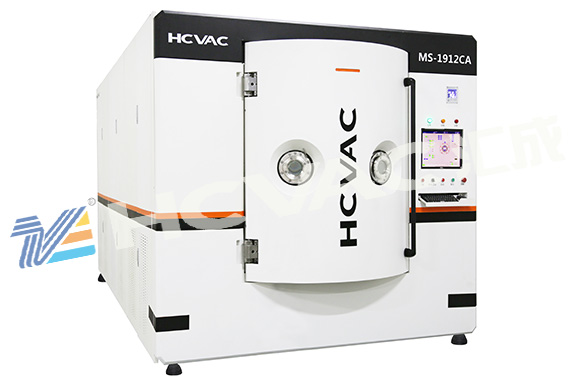With the continuous improvement of people's living standards, magnetron sputtering technology of pvd coating machine is becoming more and more in line with the needs of the people, and is being used in more and more fields. Magnetron sputtering coating technology, evaporation coating technology and ion plating technology Compared with its coating quality, its coating quality will be higher, its adhesion will be stronger, its film structure will be more detailed, and its surface will be smoother. Therefore, those who have higher requirements for the workpiece film layer will choose vacuum coating machine magnetron sputtering technology. The following is The editor of Huicheng Vacuum will introduce the relevant knowledge of magnetron sputtering technology in detail, hoping to help you:

In 1842, Grove discovered the phenomenon of cathode sputtering in the laboratory. When he was studying the cathode corrosion problem of electron tubes, he discovered that the cathode material would migrate to the wall of the vacuum tube. Since 1870, sputtering principles have been applied to the preparation of thin films. However, the development of the sputtering process has been slow over the past 100 years. After 1940, it was discovered that the sputtering film layer has extremely excellent properties. At the same time, various new processes to improve the sputtering device and increase the sputtering rate appeared one after another and reached the level of practicality. This led to the rapid development of sputtering technology. And widely used in industry.
The so-called "sputtering" refers to the phenomenon in which charged particles bombard a solid surface (target), causing solid atoms (or molecules) to be ejected from the surface. Most of the ejected particles are in the atomic state, often called sputter atoms. The charged particles used to bombard the target may be electrons, ions or medium-sized particles. Because ions are easy to accelerate and obtain the required kinetic energy under an electric field, ions are mostly used as bombardment particles. This particle is also called an incident ion. Since the mechanism that directly realizes sputtering is ions, this coating technology is also called ion sputtering coating or deposition.
There are many types of pvd coating machine magnetron sputtering coating technology:
1) DC diode sputtering. The structure is simple, and a uniform thin film can be produced on a large area substrate. The discharge current changes with changes in pressure and voltage;
2) Three-pole or four-pole sputtering. It can realize low pressure and low voltage sputtering, and can independently control the discharge current and the ion energy of the bombardment target. The target current can be controlled and radio frequency sputtering can also be performed;
3) Magnetron sputtering (or high-speed, low-temperature sputtering). Apply a magnetic field in a direction parallel to the target surface, and use the magnetron principle that the electric field and magnetic field are orthogonal to reduce the bombardment of electrons on the substrate and achieve high-speed and low-temperature sputtering;
4) Sputter towards the target. Two targets are placed facing each other, and a magnetic field is applied in a direction perpendicular to the surface of the target, so that magnetic materials can be sputtered at high speed and low temperature;
5) Radio frequency sputtering. Developed to produce insulating films, such as silicon oxide, alumina, glass films, etc., and can also sputter metal;
6) Reactive sputtering. Compound films of cathode materials can be made, such as titanium nitride, silicon carbide, aluminum nitride, aluminum oxide, etc.;
7) Bias sputtering. During the coating process, light charged particles on the substrate are simultaneously removed, so that the substrate does not contain impure gases;
8) Asymmetric AC sputtering. The target is sputtered during the half cycle with large amplitude, and the substrate is bombarded with ions during the half cycle with small amplitude to remove the adsorbed gas to obtain a high-purity film;
9) Ion beam sputtering. Under high vacuum, ion beam sputtering coating is used, which is a film-forming process in a non-plasma state. Target ground potential is also acceptable;
10) Suction sputtering. By utilizing the gettering effect on sputtered particles, impurity gases are removed, and a thin film with high purity can be obtained.



